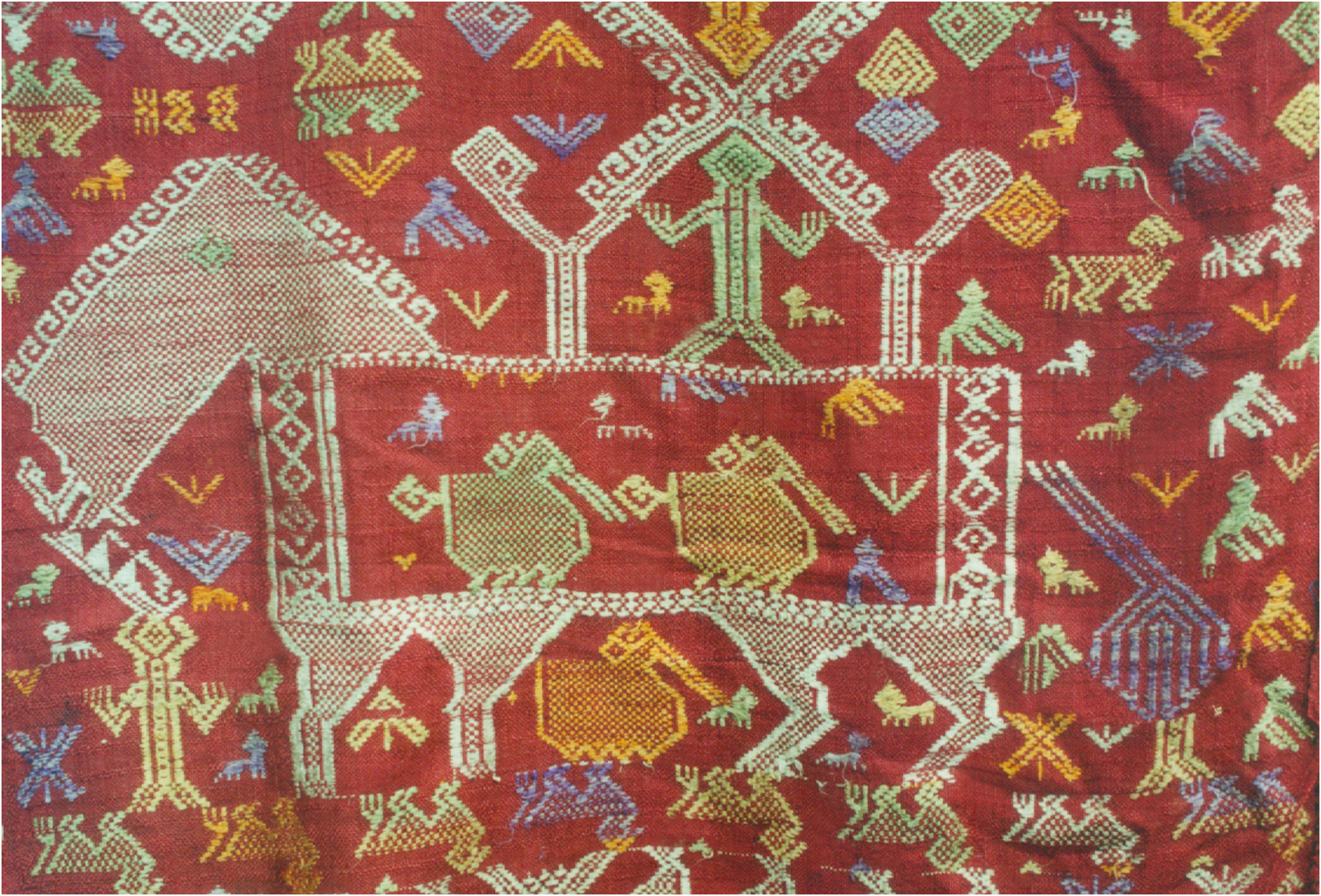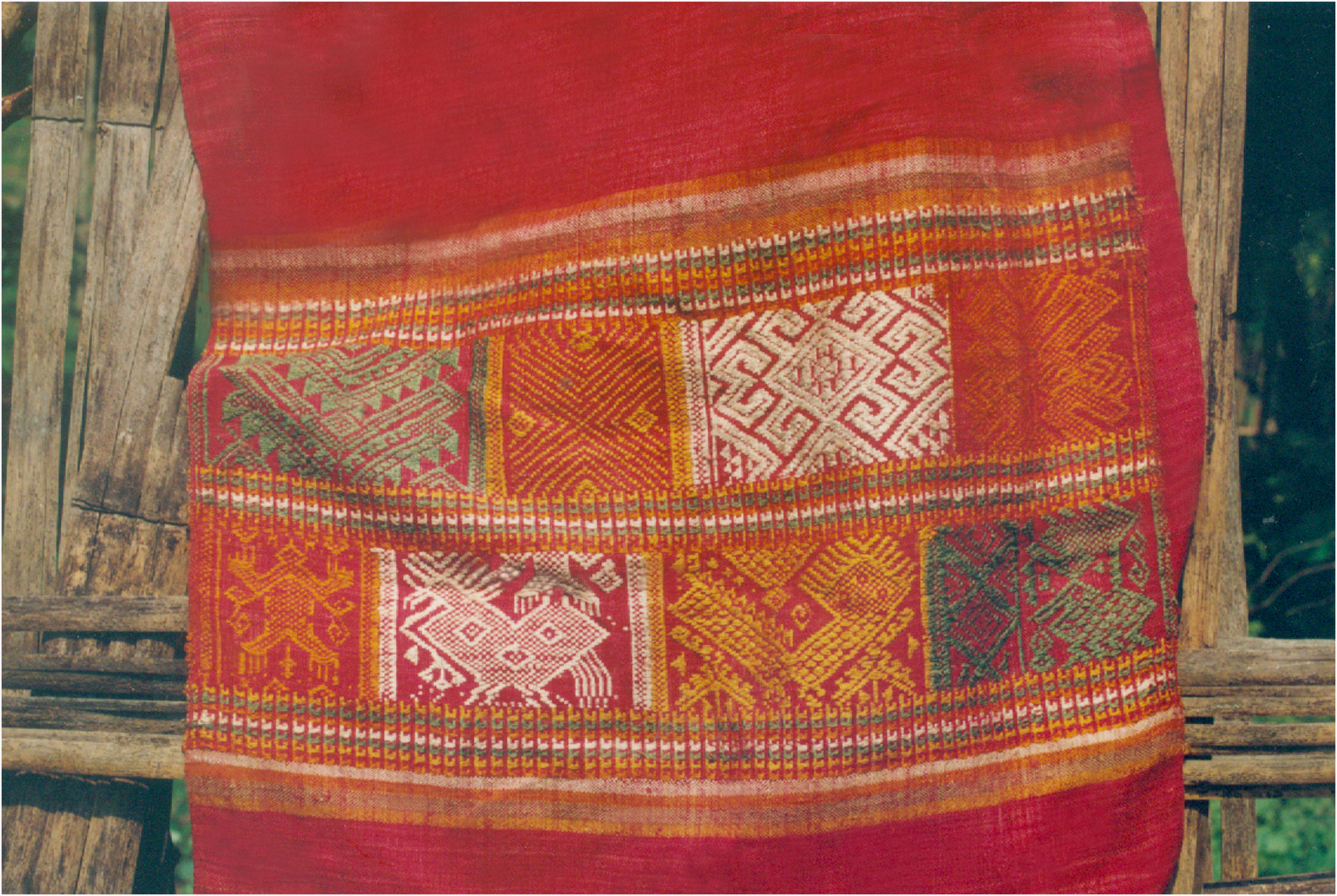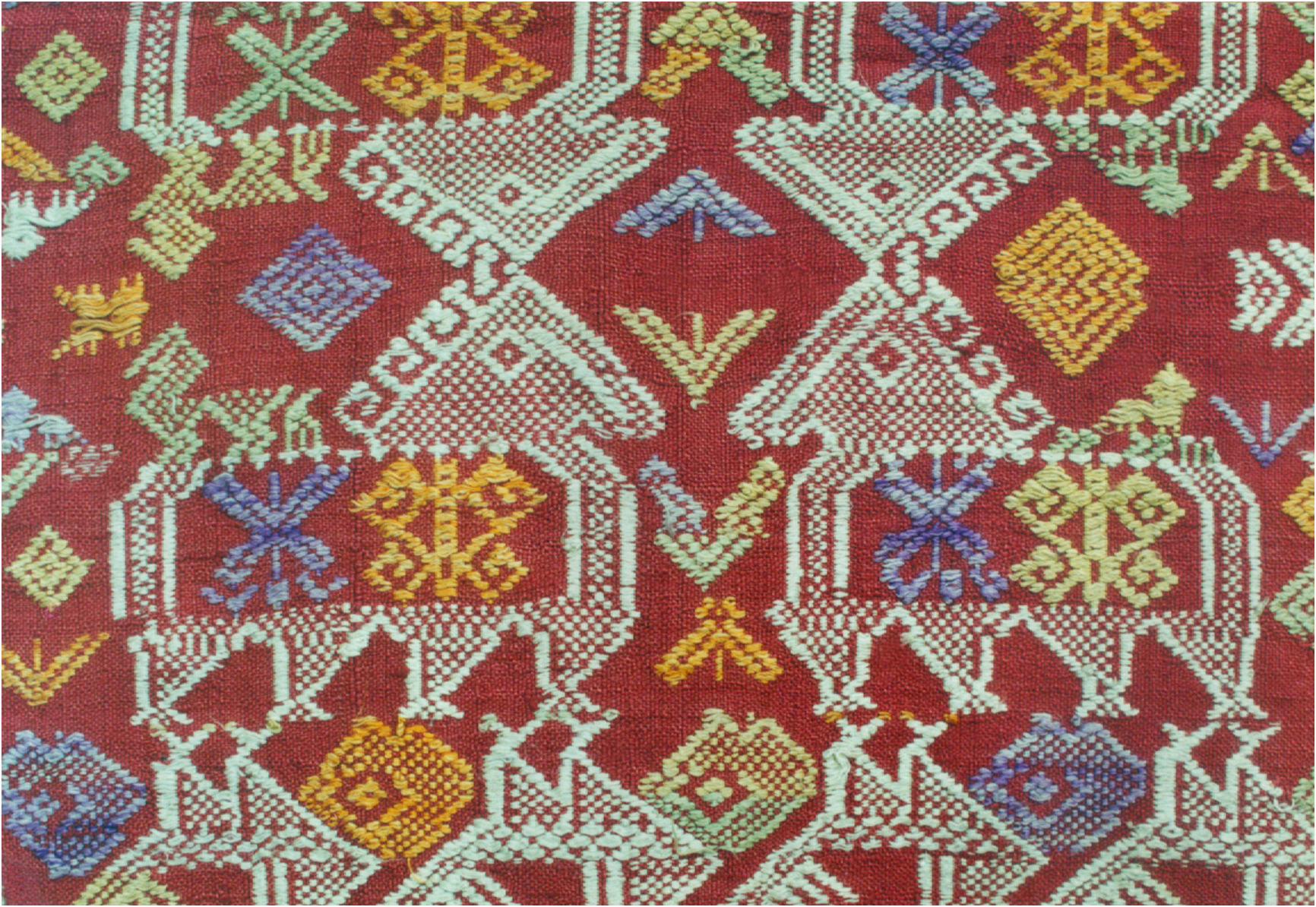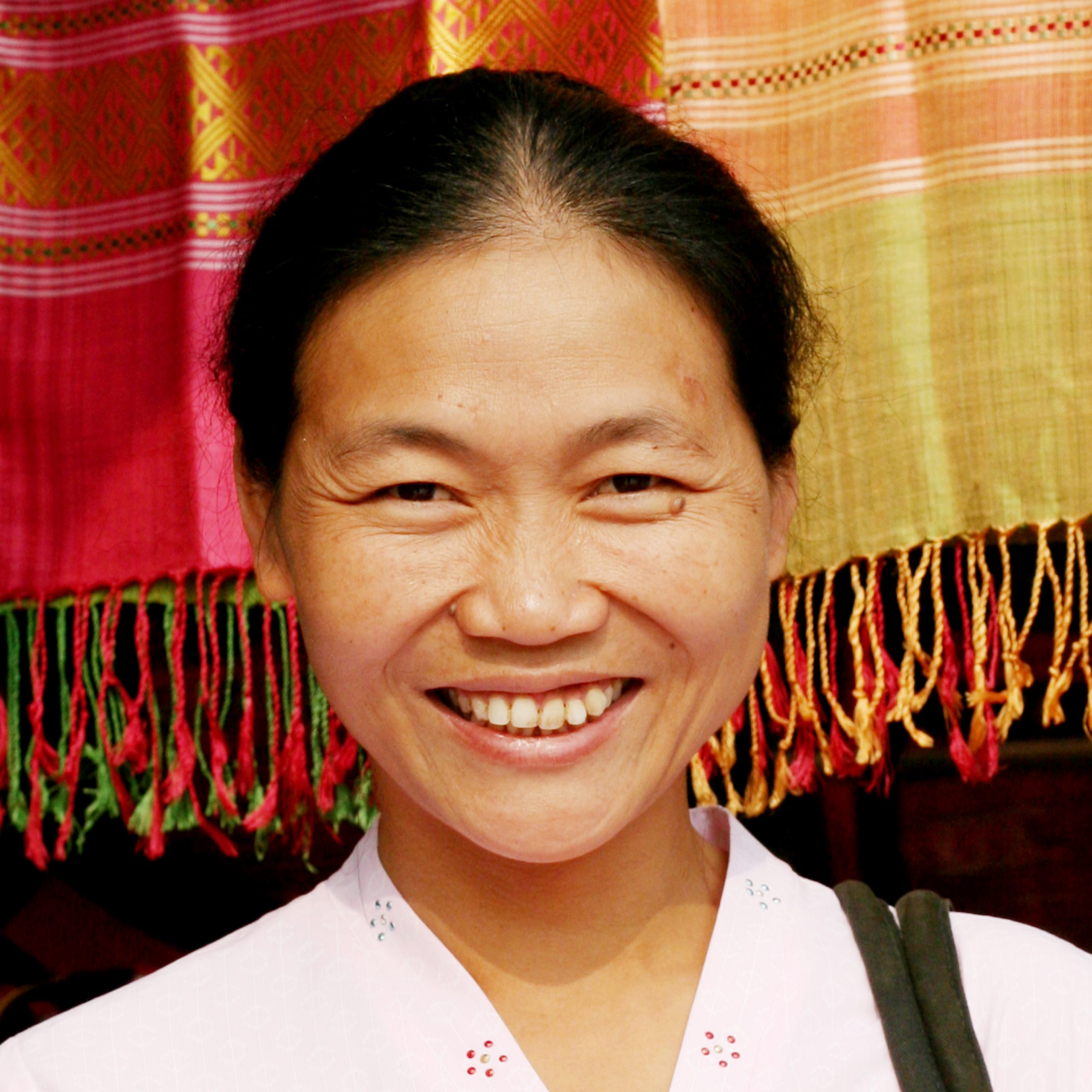Thai Textiles of Quy Chau, Nghe An
Quy Chau district in the province of Nghe an shares a border with Laos, and a strong relationship exists between peoples on both sides of the border. Some Thai families emigrated from Laos, and their language and culture is also found in several Lao province. For generations, Thai women in Quy Chau have traditionally woven and embroidered bright skirts border, call tin xin, which are similar to those found on skirt border in Laos and Thailand. In addition to embroidering skirts, women also weave and embroider cloth for blankets. Some women in Quy Chau now produce cloth following the demands of commercial traders. Fewer and fewer women, however, still make finely woven products for themselves, and most of the fine old pieces have been sold to traders.
Recognizing that the Thai women of Quy Chau possess extraordinary weaving and embroidery skills, the Vietnam museum of Ethnology and Craft Link are collaborating together to assist women in two villages to produce traditional cloth items for sale. The project trains women to reproduce old textiles and to adapt traditional for new products. It also provides training in organizational and financial management.
In order to preserve the knowledge of women in Quy Chau, the project has produced a video on the Thai women’s traditional dyeing, silk making and embroidery techniques.
The Thai skirt
Although many women in Nghe An no longer wear the skirt everyday, girls are still taught how to embroider skirts from when they are about age eight. Later they learn to weave the striped cotton cloth. Women make their skirts throughout the year and generally own between 10 and 30 of them. The skirt has three sections: the top which is a border of white cotton around which a belt is wrapped; a central cotton section of indigo-dyed cotton cloth, and the decorative woven and embroidered hem. To make the hem, a woman first weaves 10-15 arms-lengths (sai) of striped cotton cloth. One skirt hem requires about 120 cm of this cloth. She then embroiders the hem with dyed silk thread, a process that may take several months.
Skirts are worn on special occasions such as Tet, weddings, and funerals. The importance of the skirt in exhibiting a woman’s embroidery skill and in attracting attention in courtship is reflected in songs, which are remembered by older women:
All the girls wear the most beautiful skirts
Taught to embroider by their mother, today
They can show how nice their skirts are
Girls are holding needles to embroider skirts
Sitting at the loom, they are weaving elephant
Patterns for the next generation.
Embroidery motifs
Embroidery motifs are borrowed from the natural world and are passed down from generation to generation. Most motifs include butterflies, deer, pigeons, elephants, peacocks, tigers, lizards, snakes, coconut palm trees, the sun, lotus and other flowers. The dragon, however, is perhaps the most common of motifs. It figures significantly in Thai legends. There is one dragon, which brings rain and another, which brings a cool, dry season. In one legend, the dragon is a king who lives in the water and rises up to help his country when it is at war. In another, the dragon lies in a river and in the moonlight becomes a handsome man, capturing the attention of young women.
Natural dyes
The Quy Chau women have knowledge of many natural dyes, some of which are created from trees and plants near to the house and others of which are collected in the forest. From the leaves of cham (indigo) women prepare a paste, which can be used for dyeing year-round. Other dye plants include set, a root whose bark is used for making orange; canh kien, a deep red color prepared with the help of insect larva who live in the bark of particular trees; phang, a tree root which makes pink; bo muoc, a leaf which makes green, and coffee, the leaves of which make different shades of brown.
Other crafts of Thai women in Quy Chau
Women once made finely embroidered headscarves and belts, but these articles of dress are no longer worn today. Skirt cloth for funerals was especially beautiful. It was woven in naturally dyed shads of red and embroidered with abstract motifs. Blanket cloth was also once richly embroidered with abstract elephants, birds, snakes, people and other animals. Today blankets are sometimes embroidered, but there is a preference for blankets in two bright contrasting colors, which feature a pair of large animals.
Under this project, women are reproducing some of the fine skirts and blankets designs of the past. To do so, they are reviving techniques in natural dyeing.
My daughter, listen to me
Don’t go out many places on full moon nights
Being a girl, you should learn from friends, from teachers.
Learn how to weave elephant blankets in order to get married
You should care for everything in the house
You should weave many things
You should take care of your fingers
You should weave with your beautiful hands.
(From the Thai song “Lesson for a daughter”)
https://drive.google.com/drive/u/1/folders/1ccOZZnltkQc8CJ7z4ElMzouvBis2PqDm






For more information about this project, please contact:
CRAFT LINK 51 Van Mieu Str., Hanoi, Vietnam
Tel: (8424) 3733 6101
Email: craftlink@craftlink.com.vn
Web: www.craftlink.com.vn
FB: facebook.com/craftlink.com.vn
IG: instagram.com/craftlinkvietnam





